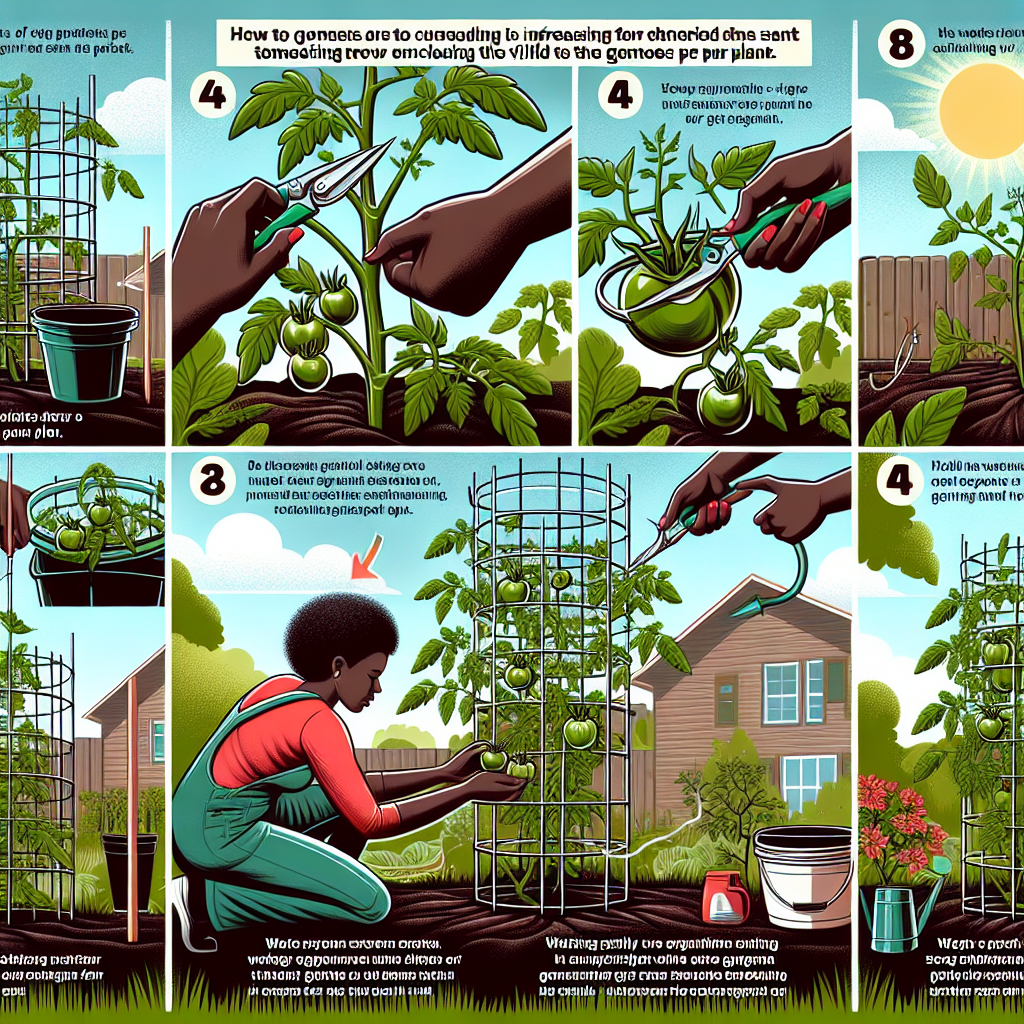
How to get more tomatoes per plant
The Ultimate Guide to Maximizing Your Tomato Yield
Tomatoes are one of the most popular vegetables in home gardens due to their versatility and delicious flavor. However, to truly enjoy the fruits of your labor — quite literally — it’s essential to know how to optimize your tomato plants for maximum yield. In this guide, we'll cover various strategies and tips on how to get more tomatoes per plant, ensuring your gardening efforts pay off in abundance.
Understanding the Basics of Tomato Plants
Before diving into the specifics of increasing yield, it's crucial to understand the anatomy and growth habits of tomato plants. The best way to start is with a clear grasp of these essential elements:
- Types of Tomatoes: There are two main types of tomatoes: determinate and indeterminate. Determinate tomatoes grow to a set height and produce fruit all at once, while indeterminate varieties continue growing and producing throughout the season.
- Growth Conditions: Tomatoes thrive in warm weather and require full sunlight, well-drained soil, and adequate nutrients.
- Water Needs: Consistent moisture is critical; however, over-watering can lead to root rot. Aim for about 1-2 inches of water per week.
Selecting the Right Tomato Variety
Choosing the right variety of tomato is fundamental to achieving a bountiful harvest. Some varieties are naturally more prolific than others. Consider the following when selecting your tomato plants:
- Climate Compatibility: Choose varieties that are well-suited to your local climate. Some tomatoes perform better in hot, humid conditions, while others thrive in cooler temperatures.
- Purpose: Determine whether you want them for salads, sauces, or canning. Certain varieties yield more fruit suited for specific uses.
- Seed vs. Transplant: Start your plants from seeds indoors, or buy healthy transplants from a nursery. Both approaches have their benefits, depending on your gardening timeline.
Soil Preparation for Maximum Yield
The foundation of a healthy tomato plant lies in its soil. Preparing your soil correctly can significantly enhance your yield potential. Here are some key steps:
- Soil Testing: Conduct a soil test to understand pH and nutrient levels. Ideal pH for tomatoes is between 6.0 and 6.8.
- Amend with Organic Matter: Adding compost or well-rotted manure can improve soil fertility, encourage healthy root growth, and retain moisture.
- Fertilization: Use a balanced fertilizer or one low in nitrogen and higher in phosphorus and potassium for strong blooms and fruit production.
Companion Planting for Enhanced Growth
Companion planting refers to the practice of growing different plants in close proximity for mutual benefit. Certain plants can help tomatoes thrive and yield more. Consider these companions:
- Basil: Enhances flavor and deters pests.
- Marigolds: Their scent repels garden pests that might harm tomato plants.
- Garlic: Helps ward off aphids and other pests.
Pruning Techniques to Boost Production
Proper pruning is vital for maximizing tomato production. By removing certain parts of the plant, you can allow for increased airflow and better energy distribution. Here’s how:
- Remove Suckers: These are the small shoots that appear in the leaf axils. They divert energy from fruit production, so prune them to focus the plant's energy on producing more tomatoes.
- Lower Leaves: As the plant grows, remove any yellowing or unhealthy lower leaves. This increases airflow and minimizes disease risk.
- Top the Plants: For indeterminate varieties, pinch off the top of the plant at the end of the growing season to encourage ripening of existing fruits.
Watering Techniques for Healthier Plants
Watering is one of the most crucial components of successful tomato gardening. Here are some expert tips to ensure your plants get the moisture they need without overdoing it:
- Deep Watering: Water deeply but less frequently to encourage strong root growth. This practice helps plants withstand dry spells.
- Mulching: Apply a layer of mulch to help retain soil moisture and suppress weed growth. Organic mulches, like straw or wood chips, work well.
- Consistent Schedule: Aim for regular watering, ideally in the morning, to minimize evaporation and ensure plants absorb moisture throughout the day.
Pest and Disease Management
Healthy plants yield more tomatoes. Therefore, proactive pest and disease management is critical. Adopt these strategies to protect your tomato plants:
- Regular Inspection: Check plants weekly for signs of pests, such as aphids or spider mites, and take action promptly.
- Natural Deterrents: Use insecticidal soap or neem oil to control infestations organically.
- Rotation: Practice crop rotation each year to prevent soil-borne diseases.
Fertilizing for Optimal Growth
Applying the right fertilizers at the right times can significantly impact your overall yield. Here’s how to fertilize effectively:
- Start with a Basal Fertilizer: Incorporate a slow-release fertilizer into the soil at planting time to supply essential nutrients.
- Mid-Season Boost: Side-dress plants with a balanced fertilizer around mid-season when fruiting begins.
- Final Feeding: In late summer, use a potassium-rich fertilizer to encourage fruit ripening and improve flavor.
Timing Your Harvest for Maximum Flavor
Lastly, knowing when to harvest can make a tremendous difference in the fruit's flavor and quality. Keep these tips in mind:
- Color and Firmness: Harvest tomatoes when they reach their full color and are firm to the touch. This indicates peak ripeness and quality.
- Pick Regularly: Regular harvesting encourages more flowering and fruit set, thus potentially increasing your total yield.
- Storage and Use: Store harvested tomatoes at room temperature to preserve their flavor. Avoid refrigerating them, as it can alter their taste.
Conclusion: Enhancing Your Tomato Crop
By understanding the intricacies of tomato cultivation and employing these effective strategies, you can significantly increase your yield. Always remember that each garden is unique, so be willing to experiment and adapt according to your specific conditions. With patience and care, you will not only learn how to get more tomatoes per plant, but you’ll also cultivate a deeper appreciation for the hard work and joy gardening brings. Happy planting!
By Guest, Published on September 18th, 2024